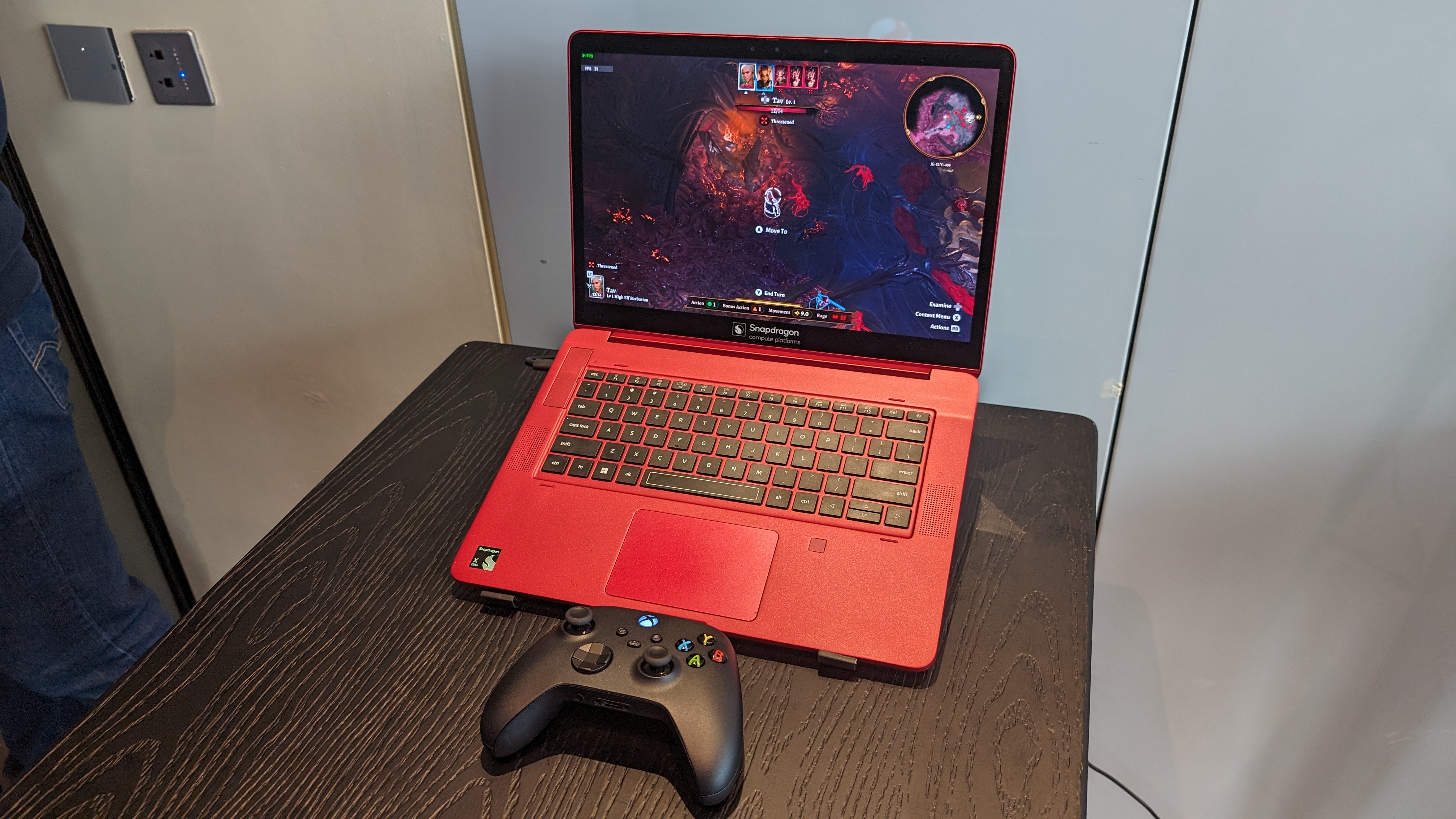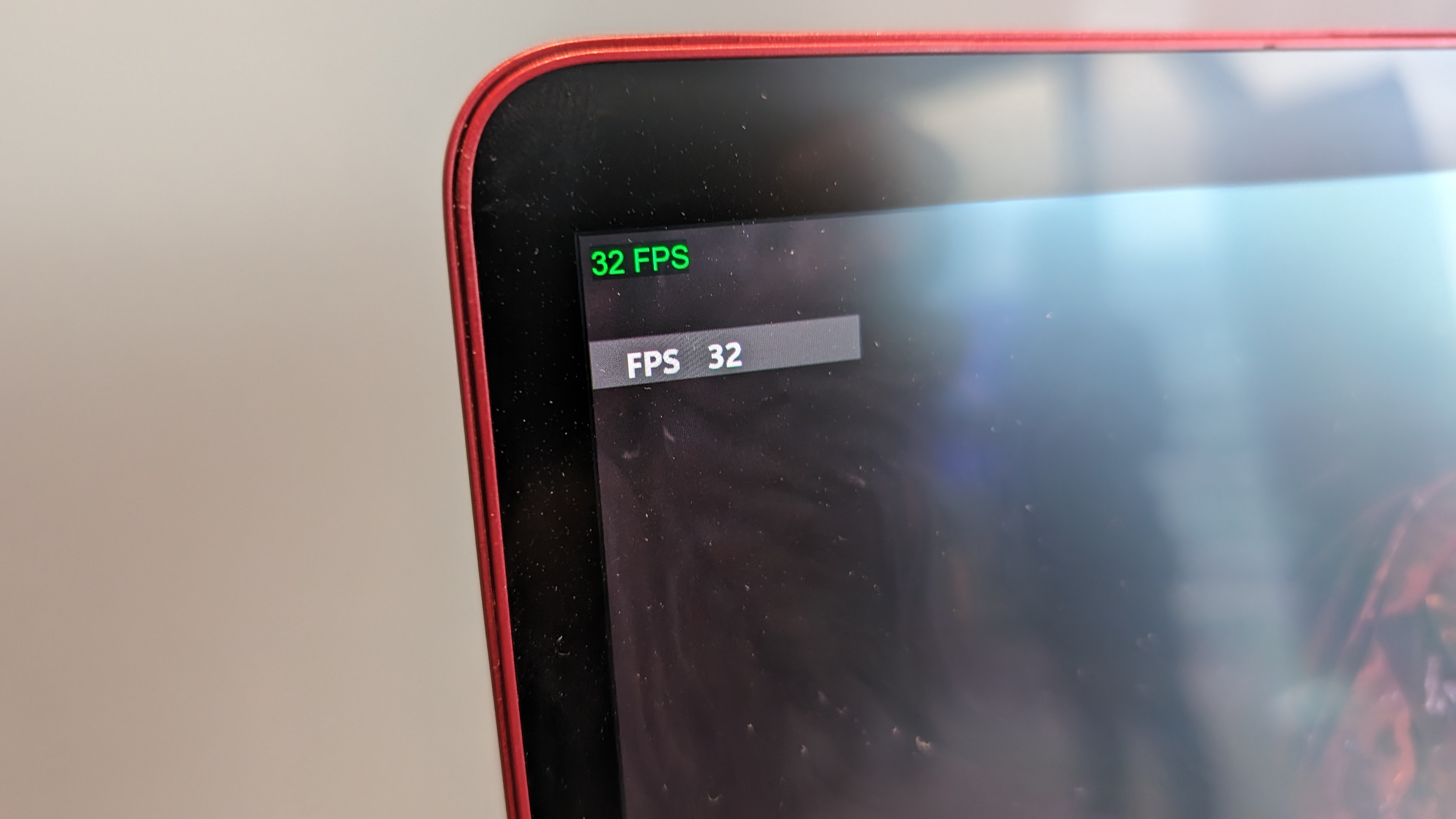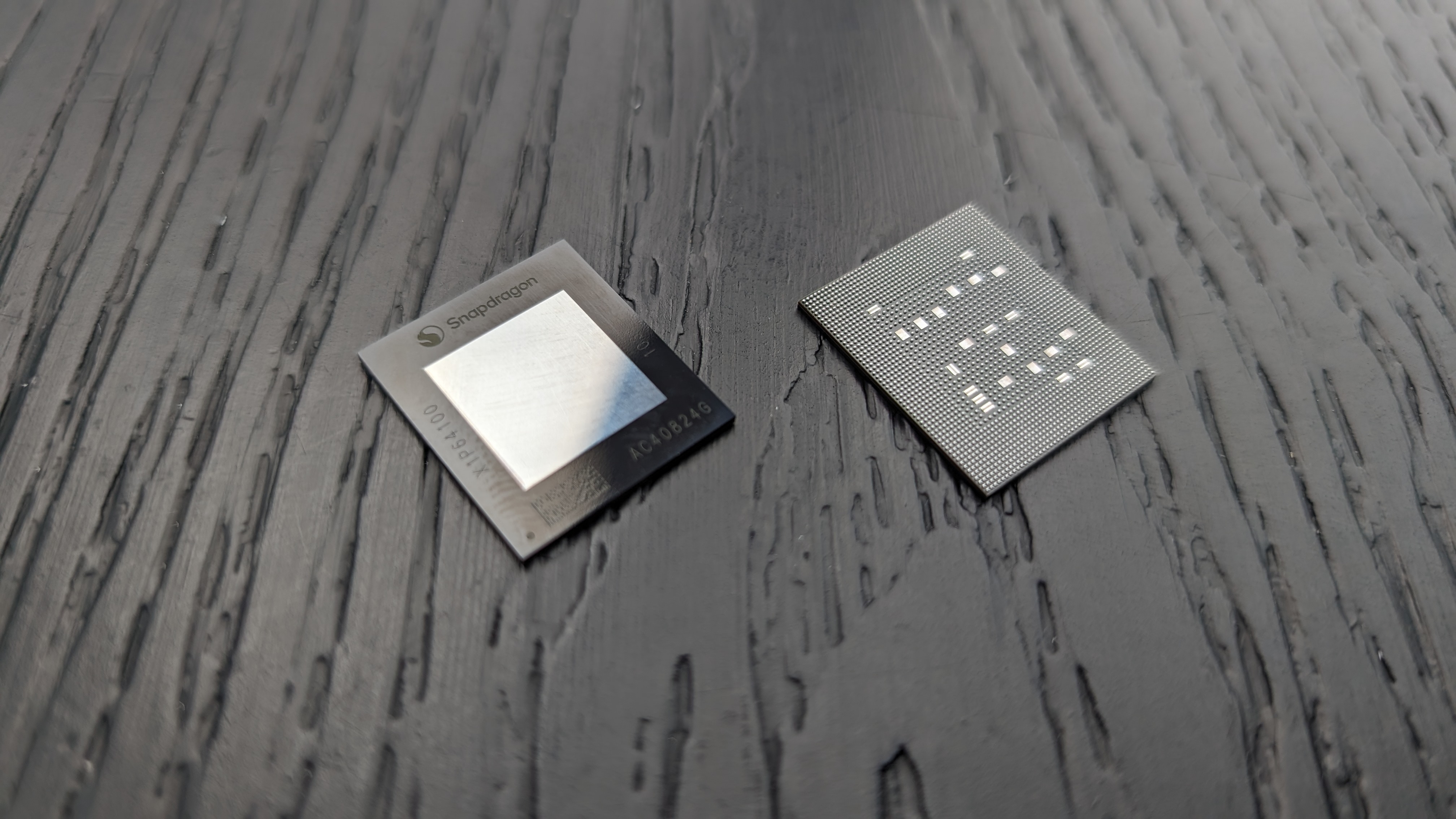Apple should be worried – Qualcomm’s Snapdragon X Elite chip threatens to end the dominance of M3 MacBooks, and I played Baldur's Gate 3 on a notebook to prove it
A new ruling Elite?

When Apple launched the M1 MacBook Air way back in 2020 (damn, that really was four whole years ago), I was blown away. Now, anyone who knows me knows that I’m no Apple fanboy, but I am a colossal hardware nerd, and I was briefly obsessed with the processing power provided by the M1 silicon – a system-on-a-chip (SoC) solution that positively demolished competitors at the time.
But Apple’s rivals haven’t been slacking. As the MacBook maker worked on its new M3 chip, AMD powered ahead with mighty new mobile processors, while Intel did the unthinkable and put an end to its iconic ‘i’ branding with new Core Ultra CPUs. Meanwhile, Qualcomm unveiled its new Snapdragon X SoCs – and now, it’s throwing down the gauntlet with its upcoming Snapdragon X Elite processor.
I was lucky enough to attend a hands-on session with the new X Elite chips in London this week, and let me tell you: it’s magical stuff. Qualcomm let me go wild with the prototype laptops they had for hands-on sessions, and after a few initial benchmarks I jumped straight into Baldur’s Gate 3, expecting the compact laptop to crumble completely under the hardware demands of 2023’s Game of the Year.

But no – the game played at a stable 30fps at 1200p resolution (that’s FHD stretched on a 16:10 display), with a medium-low custom graphics preset. Sure, that’s hardly mind-blowing performance, but considering the scalability of the Snapdragon X Elite chip for lightweight notebooks and even tablets, it’s impressive – and what’s more, the game was emulated.
Native vs emulation
For the uninitiated, ‘emulation’ refers here to the fact that Baldur’s Gate 3 can’t run natively on Snapdragon chips – it’s an x86 program, the software architecture used to power Windows on conventional Intel and AMD processors. Qualcomm’s chips are Arm-based, a different architecture that has historically powered everything from tablets to sat-navs to the Nintendo Switch.
To run x86 (or x64) software that lacks an Arm variant, Windows has to use an x86 emulator, thus providing compatibility. Most Windows apps are x86 as standard, and may not have an Arm-based equivalent – and unfortunately, emulation often leads to performance drops and bugs compared to native operation, since it effectively introduces an extra layer of tasks for the processor to run through.
This – along with the pool of apps that can’t be practically emulated on Arm – has historically proved to be a major stumbling block for Windows on Arm (WoA). The Surface Pro 9 5G, an otherwise pretty awesome piece of hardware, was marred by issues arising from its Arm-based Microsoft SQ3 chip. My colleague John Loeffler voiced his concerns about Windows on Arm last year, and I’m inclined to agree with him. It’s hard to recommend a Windows device that comes with a list of apps it just can’t run.
Get daily insight, inspiration and deals in your inbox
Sign up for breaking news, reviews, opinion, top tech deals, and more.
The times, they are a-changing
The drawbacks of emulation make it all the more impressive that Baldur’s Gate 3 was playable on the Snapdragon X Elite, but Qualcomm seems confident that the WoA dream is finally going to become a reality.
At the event, its reps touted a wide range of programs and games that are now Arm-compatible (including the long-awaited Chrome for Arm, which was released earlier this year) and seemed remarkably confident that WoA systems would only continue to improve with better native support and compatibility.
Of course, the X Elite chips do have one critical secret weapon: a powerful 45 TOPS neural processing unit, or NPU.
NPUs are the hot topic of the chipmaking world right now: dedicated chips mounted on an SoC die, which is designed to handle machine learning processes – in other words, AI. More and more software now uses machine learning in some way, and the presence of the NPU – which Qualcomm claims is best-in-class against existing consumer competitors – allows for tasks to be ‘offloaded’ from the main CPU and GPU to improve overall performance.

It’s a clever trick that can serve to seriously boost the speed of your system. For example, I used the streaming software OBS Studio with its AI auto-captioning feature turned on, and when I checked the system’s resource use the CPU load was barely at 10% while the NPU soaked up a large amount of the resource demand. In other words, I still have plenty of CPU and GPU allocation left to run other programs – a boon for streamers and content creators who will often have multiple applications running at once.
Ultimately, the success of Qualcomm’s new chips – with Snapdragon X Elite laptops expected to start launching in mid-2024 – could be very dependent on Microsoft’s implementation of Windows on Arm, but the initial showing is strong. With powered-up NPUs along with some of the best performance we’ve ever seen from a Snapdragon chip, Qualcomm could be about to take the laptop world by storm.
You might also like

Christian is TechRadar’s UK-based Computing Editor. He came to us from Maximum PC magazine, where he fell in love with computer hardware and building PCs. He was a regular fixture amongst our freelance review team before making the jump to TechRadar, and can usually be found drooling over the latest high-end graphics card or gaming laptop before looking at his bank account balance and crying.
Christian is a keen campaigner for LGBTQ+ rights and the owner of a charming rescue dog named Lucy, having adopted her after he beat cancer in 2021. She keeps him fit and healthy through a combination of face-licking and long walks, and only occasionally barks at him to demand treats when he’s trying to work from home.